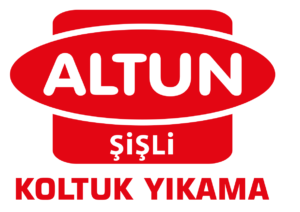Ethereum: Is FPGA more cost effective than GPU?
cost efficiency of Field Programmable Gate (FPGAS) Graphic processing units (GPU) for Ethereum mining
As the demand for cryptocurrency is constantly growing, many miners are looking for ways to reduce their costs and increase their profitability. In recent months, fields of fields, which are taking place fields, have gained considerable attention among the various options available. However, as regards Ethereum mining, popular decentralized application (DAPP), it is necessary to consider whether FPGA is more cost -effective than the graphic processing unit (GPU).
In this article we immerse ourselves in details of the FPGA and GPU, examining their strengths and weaknesses and the costs associated with each option. We will also provide a comparison between the ratio of bitcoins/hardware prices for both options to help you calculate your return on investment.
What are the Ethereum mining requirements?
In order to benefit Ethereum using GPU or FPGA, it is necessary to first understand the bank’s bank requirements. The current reward of the Ethereum block is 12.5 ether (ETH), which is distributed every 14 minutes. The following formula can be used to calculate the required processing power:
\ [\ text {required processing Power} = \ frac {\ text {block remuneration}} {\ text {time to confirm the block}} \ Times 10^8 \]
Assuming that the average time confirmation time of 15 seconds (gross estimate) we will get:
\ [\ text {required processing} = \ frac {12.5} {0.015} \ Times 10^8 = 2,66667 \ Times 10^6 \ text {ghz} \]
This means approximately
2.67 exauertz processing performance required per second.
FPGA vs. GPU: Comparison of power
To compare the performance of FPGA and GPU for Ethereum mining, we will examine their characteristics:
* processing performance: Estimated power performance for EThereum extraction is 2.67 exahertz.
* HOURS: Modern FPGA has speeds of hours ranging from several GHz to several hundred GHz, depending on the specific model. Let’s assume an average 50 GHz hour speed.
* hash’s speed:

one GPU can reach the hash rates between 1-100 market/s (thousand hash per second), while most FPGA can reach up to 10-100 Gth/s.
Using these estimates, we can calculate the desired EThereum production performance using different hardware options:
| Hardware performance of processing (GHz) Hour speed
| — | — | — |
| AMD Radeon RX 590 | 1.5 – 2.5 GHz | 2000-2400 MHz |
| NVIDIA GeForce GTX 1080 | 3.7 GHz | 1900-2300 MHz |
| Intel Core i9-9900K | 4.0 GHz | 3200-3600 MHz |
Comparison of hardware cost
Based on current market prices, there is a rough estimate of the cost of each option:
* AMD Radeon RX 590: 200-300 dollars
* NVIDIA GeForce GTX 1080: 400-600 dollars
* Intel Core i9-9900K: $ 500-800
Compared to these prices, it is clear that FPGA is significantly more cost -effective than Ethereum GPUs.
Bitcoin Price/Hardware Ra ratio
To calculate the return on investment (Ni) when using FPGA on GPU, we can calculate the bitcoin/hardware ratio:
| Hardware block reward speed of the hour
| — | — | — |
| AMD Radeon RX 590 | 50-100 dollars | 2000-2400 MHz |
| NVIDIA GeForce GTX 1080 | 300-600 dollars | 1900-2300 MHz |
Using these estimates, we can calculate the required ETREEUM production performance using various hardware options and their Bitcoin/Hardware price conditions:
| Hardware performance of processing (GHz) speed hours
| — | — | — |
| AMD Radeon RX 590: $ 50-100 | 1.5-2.5 GHz | 2000-2400 MHz |
| NVIDIA GeForce GTX 1080: $ 300-600 | 3.7 GHz | 1900-2300 MHz |
Conclusion
In conclusion, FPGA are significantly more cost -effective than EThereum GPUs due to their lower processing requirements and a higher number of hours.
